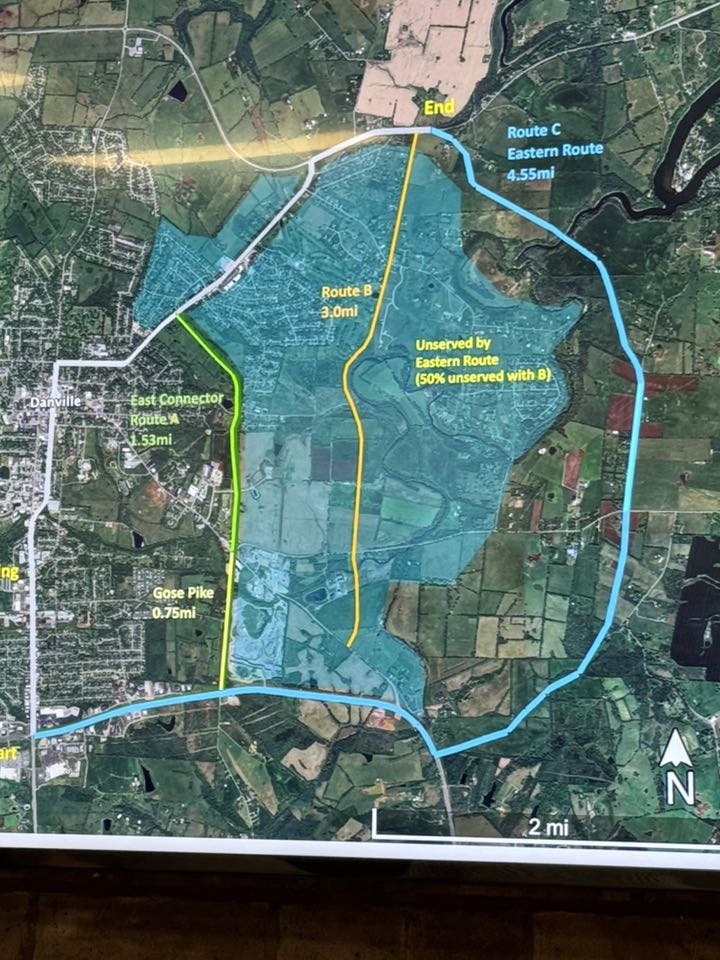Ag Notes: Black cherry trees around livestock
Published 8:57 am Tuesday, April 24, 2018
By Jerry Little
Contributing Writer
Black cherry trees grow in abundance across Kentucky’s landscape. These trees are an important timber and wildlife species, yet can cause cyanide poisoning in livestock.
Trending
The leaves of the trees, especially wilted ones, are high in cyanic acid, which can kill livestock by depriving them of oxygen.
You can reduce the likelihood of livestock losses due to wild black cherry trees by cutting them out of fencerows. You may want to remove cherry trees that pose a risk, such as those that could potentially lose branches or are in poor condition. But you can leave healthy, well-pruned trees to become a potential timber source.
If you are going to take out a tree, it is important to do it properly to reduce sprouting and recurrence. Black cherry trees have a propensity to sprout from the cut stump and from the roots, so take extra precautions. Also, you should check fencerows for the trees’ inevitable from seed carried by birds.
The quickest way to reduce or eliminate sprouting is to properly use herbicides that are labeled for controlling black cherry in pasture or fencerows. These herbicides are systemic, meaning they will travel throughout the plant and have the potential to kill all or a portion of the root system so that sprouting is reduced or eliminated.
If you don’t use herbicides, you can expect sprouting, and you’ll probably have to cut several times to exhaust the food supply to the roots. This could take several years.
You can apply herbicides in one of two methods, foliar spray or “cut stump” applications.
Trending
You can use a foliar spray if the trees are small enough to allow spray coverage of all or a large majority of the leaves. This technique involves spraying a diluted concentration of herbicide to cover the foliage.
Many herbicides are labeled for foliage application of brush and trees. Foliar applications work best after trees have fully leafed out until one or two weeks prior to leaf fall. The treated tree should remain in place until all the foliage has browned, ensuring that the herbicide has entered the root system.
Check product labels for restrictions on pasturing and entry into treated areas. Generally, livestock should not be allowed access to areas where trees have been sprayed until the trees have been removed or wilting foliage is no longer present.
Larger trees should be cut down and then a herbicide treatment applied to the cut stump. This method involves spraying the freshly cut stump with a concentrated herbicide solution. It is important that you apply a concentrated solution according to label directions.
A number of herbicides are labeled for stump application including those with active ingredients such as glyphosate, triclopyr and dicamba. It is also critical to treat the stump as soon as possible and no longer than an hour after the top has been exposed to air. Waiting longer could reduce the effectiveness of the treatment.
If the tree has been cut within several weeks, it may be possible to recut the stump by at least two inches to expose moist, live wood and then apply the herbicide.
Cut stump applications generally carry less environmental risks than foliar applications because you apply the herbicide directly to the target plant with less risk of overspray and non-target exposure, with one exception.
It is possible that the treated cherry trees may be root grafted to an adjacent black cherry or ornamental/cherry tree. Instances have been documented where a herbicide has moved from a treated tree to another of the same species or genera through a root graft. While this is not a high probability, in areas where other cherry trees are present, you should consider mechanical removal of the tree.
For more information on cherry trees and livestock, contact the Boyle County Cooperative Extension Service.
Educational programs of the Kentucky Cooperative Extension Service serve all people regardless of economic or social status and will not discriminate on the basis of race, color, ethnic origin, national origin, creed, religion, political belief, sex, sexual orientation, gender identity, gender expression, pregnancy, marital status, genetic information, age, veteran status, or physical or mental disability. University of Kentucky, Kentucky State University, U.S. Department of Agriculture, and Kentucky Counties, Cooperating.
Jerry Little, County Extension Agent for Agriculture/Natural Resources






